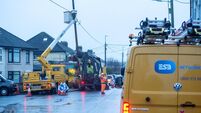Ireland to achieve jobs growth despite losses, says EU
But governments and employers throughout the EU have to start treating and paying women better if they want to achieve their target of 70% employment by 2010.
Over the past 11 years, there has been an increase of more than 1.3 million women in the EU workforce, bringing the participation rate from 54% to just under 55%.













